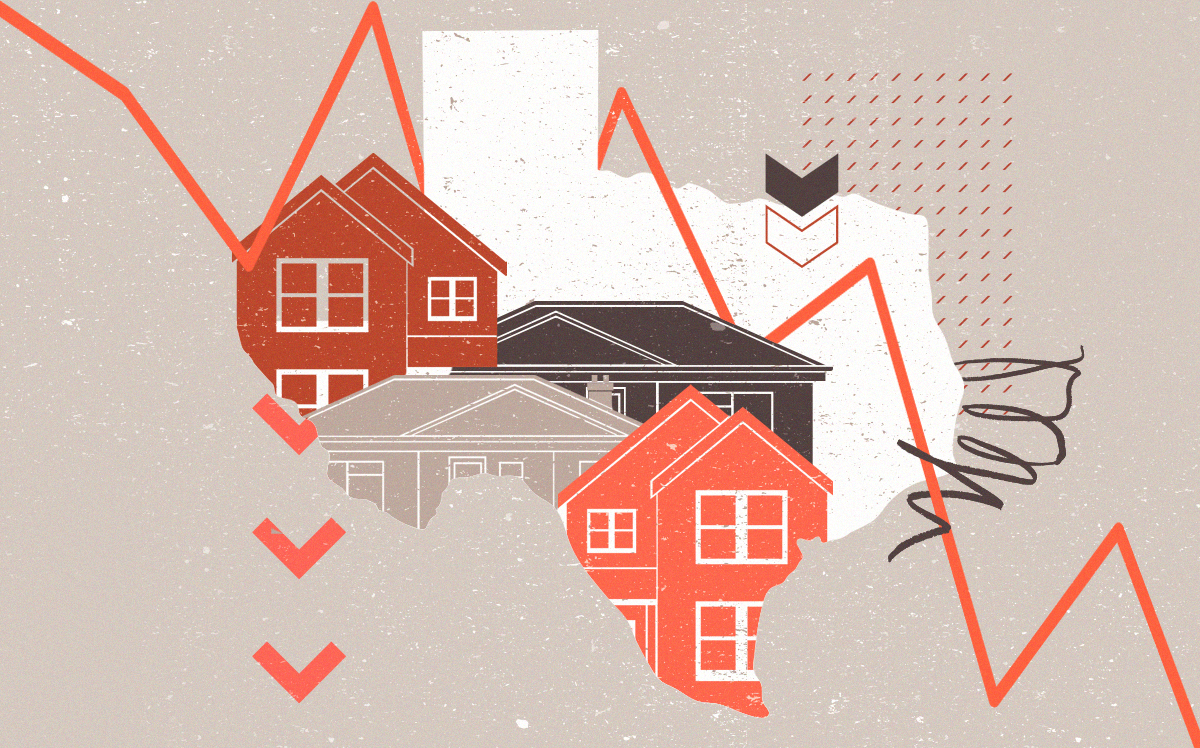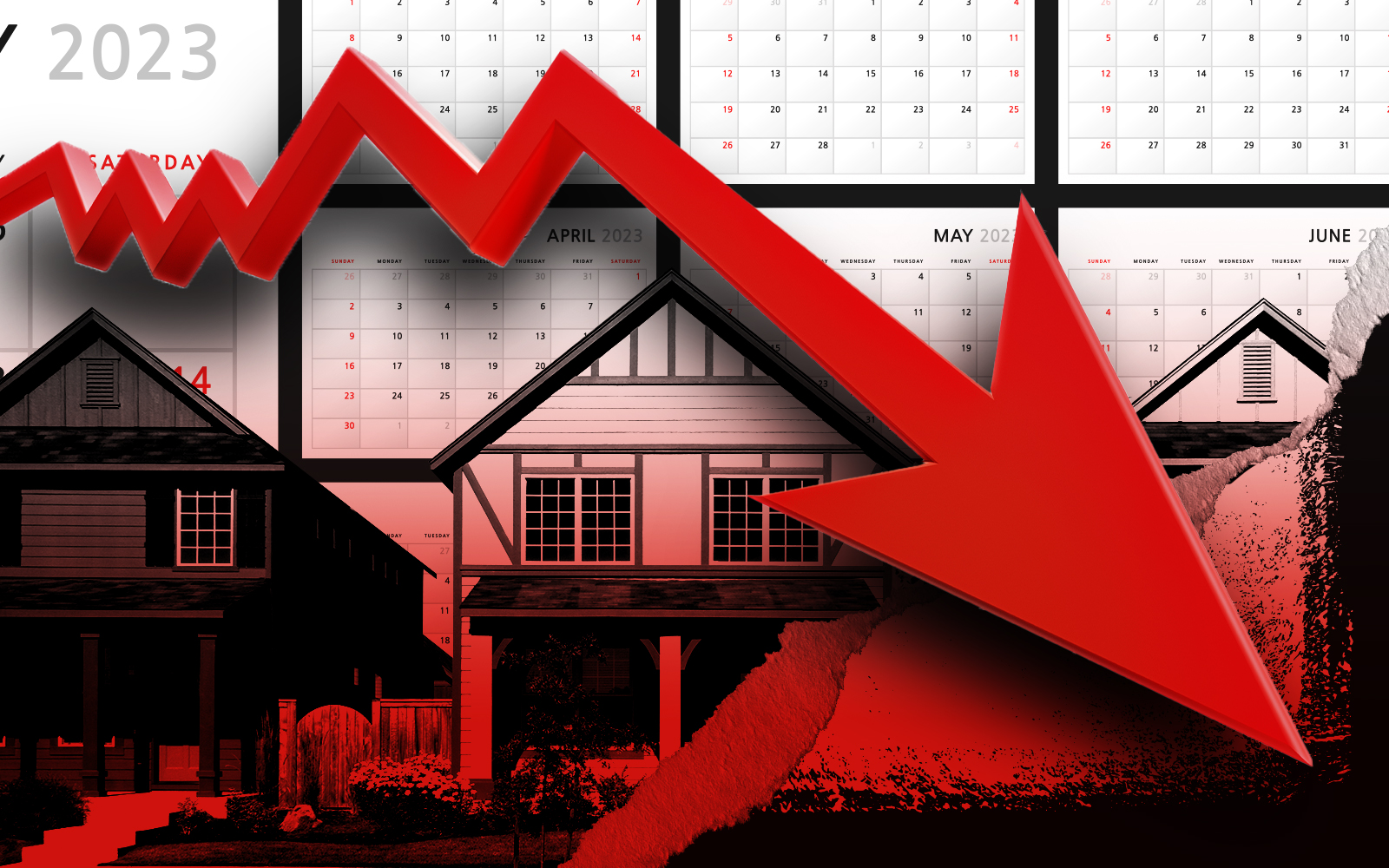Trending
Could Texas builders run out of entitled development sites?
Builders have offloaded sites and could be caught flat-footed when demand returns

The nation’s largest homebuilders treat development sites like a Spirit Airlines traveler treats baggage: carry only what is absolutely necessary, and buy the rest later.
Publicly traded homebuilders need land to build their neighborhoods, but they almost always prefer to buy development sites with permits and entitlements already lined up. Permitting can be a lengthy process that requires hyperlocal knowledge, making it easier to outsource than cultivate internally.
In an effort to keep a light balance sheet over the last year amid softer demand from buyers, builders have moved to a “land-light” approach, halting new land acquisitions and backing out of as many nonbinding deals as possible. But there are signs that this short-term adjustment may cause major pains in the long run.
As development site sales slowed over the last year, builders ran the risk of being caught flat-footed when demand returns. Builders spent much of 2022 offloading as many development sites as they could, opening the door for a major land grab when conditions improve.
“They’re like sheep: they buy too much when the market’s good, and they overreact and drop everything when the market tightens up,” said Rex Glendenning, a Frisco-based land broker who sells major homebuilders the entitled tracts they need to build homes. “They’re all tense, and terse, and overreacting, and it opens up some real opportunities for those that are not as risk averse, and are willing to go buy something and hold it.”
Whiplash
It started, like so many problems in the market, with rising interest rates. After seven straight years of growth, home sales fell by more than 10 percent in 2022, with the decline starting almost immediately after the Federal Reserve first raised rates.
Homebuilders face a strong incentive from investors to keep as few built-but-unsold homes on their books as possible. On average, Lennar has kept its supply of such homes at one or less per community for the past years, the firm’s chairman Stuart Miller said on a recent earnings call. The company built 66,400 homes in 2022, and as of this March, it held just 1,300 unsold uncompleted homes.
Even worse than unsold homes are undeveloped lots, which won’t yield revenue for years. As demand for homes softened, major homebuilders moved to cut as much land as they could in order to keep margins high.
“Everybody dropped pretty much every contract that they had,” Glendenning said, sometimes resulting in spectacular fees.
PulteGroup, an Atlanta-based homebuilder with a $13 billion market cap, walked away from $900 million in planned land acquisitions, forcing it to write off $31 million in pre-acquisition costs and deposits.
Taylor Morrison cut its land spending by $300 million last year. Lennar decreased its homesite supply from 2.7 years to 1.9 years.
“At the end of the day, land value is a residual of what it can be used for,” Miller said on the earnings call. With home price growth slowing, particularly in the Sun Belt cities that have seen years of intense increases, that meant land became less valuable to builders.
Land sellers don’t see it the same way. While land prices are extremely variable from market to market, prices have not fallen nearly enough for homebuilders to pull the trigger, suggesting that there is not much incentive for sellers to meet buyers where they want to be.
“I think some of them are getting a little bit nervous. They all think they had the last piece of land that can be acquired or developed. Stuart [Miller], Jon [Jaffe] and I have heard that comment for the last 20 years,” Rick Beckwitt, Lennar’s co-CEO with Jaffe, said on the recent earnings call. “There’s always more than the last piece of land.”
Return of the Buyer
Instead of buying more land, builders focused on ways to move the homes they already had.
Interest rates are still sidelining many would-be buyers. A recent report from S&P Global found that 30-year mortgage rates were at their highest level since 2008 and estimated that American homes are about 20 percent overvalued. But builders have responded with incentive programs, renegotiations and price reductions, particularly in markets like Austin, where rent growth and home sales slowed more aggressively.
Publicly traded homebuilders cut prices between 10 and 12 percent in the closing quarter of 2022 but maintained gross margins of 25.6 percent, slightly above the standard of 20 percent, according to real estate consultant John Burns, whose eponymous firm tracks single-family housing activity.
“It’s really easy to drop prices when margins are this high,” Burns said at a webinar on single-family rentals, hosted by Berkadia. Overall, land acquisitions by the public builders were down 6 percent year over year in the fourth quarter of 2022, while they grew more than 30 percent year over year in the fourth quarter of 2021.
Some homebuyers have started to return. Some builders are now looking for ways to get that land back at a price that will work in the new market, according to Carl Reichardt, a managing director and homebuilding analyst at BTIG. “The problem is we’ve priced it 15 percent above what the market can bear and earn an appropriate return or margin,” the thinking goes, Reichardt said. “A lot of stop, start and confusion and twirling of the head in terms of how quickly things are changing.”
The market is nowhere near its 2021 peak — buyers practically needed to hand over the cash in a burlap sack on sight to secure a home — but there are signs that demand is returning.
“I think we’ve just gone from really weak to kind of OK,” Reichardt said. “That in turn has caused the builders to say, ‘Whoa, we spent like, six, nine months not doing anything. We better get on the stick.”
At current rates of inventory and activity, builders are tracking to handle 2023 demand without problem. But down the line, if rates decrease or the gap between rental and purchase values narrows, there could be yet another whiplash — but this time, rather than going in the direction of abandoning land, builders will be competing over every scrap they can get.
Population influx
For five years straight, the number of homes under construction in Austin and Dallas-Fort Worth had almost exclusively grown, but that streak ended in the fourth quarter of 2022, when Austin experienced its first quarterly decline since 2018, and Dallas its largest in that time, according to data from Zonda.
Fewer homes under construction and less land on the books, all while people keep moving to Texas. For homebuilders, that could spell a choke point in the not-too-distant future.
“They're not looking at 2023 as being a hard market. They're looking at 2025,” said Keith Hughes, who works for Zonda in Texas. “Coming into 2025, if they don’t have positions to go into, they’re gonna gap out”
Glendenning, the land broker, puts it more frankly: “In the next 18 months to two years, they’re gonna wake up and go ‘Gosh, we need a bigger position.’”
There are some exceptions to the rule, and land still trades hands, particularly to the types of private investment firms that can stomach a longer hold period.
“The builders don’t want to buy a green banana,” Glendenning said, but the firms without big credit committees and bureaucracies can close on tracts. He has sold land in northern Dallas to Jerry Jones’ Blue Star Innovation Partners several times as the city has sprawled northward. Each of those times — 1994 in Frisco, 2003 in Allen, 2012 in Prosper, and now in Celina — Jones has closed on the land during times when larger firms have wanted to keep lean.
“I do think there’s going to be a shortage of lots,” Glendenning said. “It happens every cycle.”







